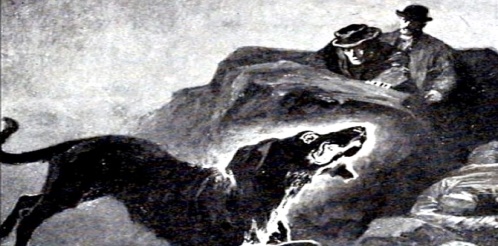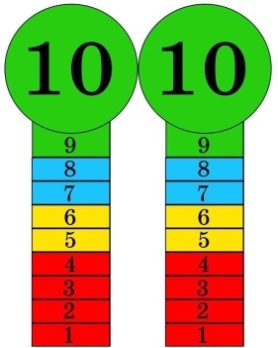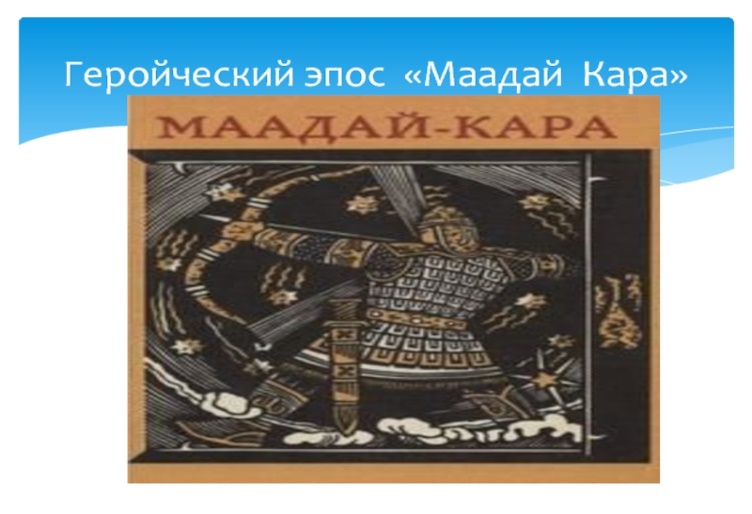
Short term plan: term 3
|
Unit 5: Reading for pleasure |
Lesson 49 |
||
|
Teacher name: |
|
||
|
Date: |
|
||
|
Grade: 7 |
Number present: |
absent: |
|
|
Lesson title |
The Hound of the Baskervilles |
||
|
Learning objectives |
7.4.1.1 understand the main points in texts on a limited range of unfamiliar general and curricular topics 7.2.5.1 recognise the opinion of the speakers in supported extended talk on a range of general and curricular topics 7.3.8.1 recount some extended stories and events on a growing range of |
||
|
Lesson objectives |
Learners will be able to: - introduce the topic; to read for specific information - read for specific information - consolidate vocabulary from the text |
||
|
Value links |
Family – Family values are moral and ethical principles of typical family life, including sacrificing for loved ones, putting your loved ones first, and keeping your loved ones at the centre of your thoughts and actions. |
||
|
Plan |
|||
|
Stages / Time |
Teachers actions |
Students actions |
Assessment criteria |
Resources |
|
Beginning of the lesson Warming-up
3 min. Pre-learning «Brainstorming» method 7 min. |
Organization moment : 1.Greeting. Ask about the weather. The teacher sets the lesson objectives, letting students know what to anticipate from the lesson. Warming up Where are you from? How old are you? What color is it? How many students are there in class? What day of the week today? Hand out the completed Progress Report Cards for the previous module and ask the pupils to file them in their language. Lead – In
|
The aim: To develop pupils speaking skills and create friendly atmosphere Efficiency: By wishing each other they feel better and feel the support of others Students of the class are listed. Students' attention is drawn to the lesson. Students say different words from the picture •Learners remember previous lesson vocabulary •Learners answer the questions Did you read this book? What about it? |
The teacher to assess learners for their ability. “Good job! Well done!” Formative Assessment
Good job! Descriptor: - remembers the lesson passed Point 1 Assessment criteria make basic statements related to holiday activities: sports |
Pictures worksheet Picture |
|
Middle of the lesson Presentation part. 30 min |
Ex:1 P:54 • Elicit what, if anything, Ss know about Sir Arthur Conan Doyle and the famous character he created. Ask Ss to read the biography and elicit answers around the class. Ex: 2 P: 54 • Explain that the plot of a book/film is the series of events that make up the story. Allow Ss time to read the plot and answer the questions. Elicit answers around the class. Ex: 3 P: 54 • Explain the task Elicit Ss' guesses as to what happens. Play the recording. Ss listen and read the text to find out. Ex: 4 P: 55 •Explain the task Allow Ss time to read the text again and complete the task Check Ss' answers. Ex: 5 P: 55 •Explain the task. Allow Ss time to fill in the gaps with the corect verbs. Check 55 answers. Conclusion during the lesson some tasks differentiated by outcomes of the students and by their abilities. |
• Learners read the biography to find out. Answer the question. ANSWERS Sir Arthur Conan Doyle was a British writer born in 1859. He created the famous detective Sherlock Holmes • Learners read the plot to find out. Answer the question. ANSWERS The Hound of the Baskervilles is about a family who are threatened by an enormous dog. One member of the family is killed, and his nephew is in danger. Sherlock Holmes and Dr Watson try to find out if the legend is true and solve the mystery of who is trying to kill the nephew. It is a detective story. • Learners listen and read to find out. Answer the question ANSWERS I think that on the way back to his house, an enormous hound chases after Sir Henry. • Learners read the extract and mark the sentences ANSWERS 1T 2 DS 3 T 4 F 5 DS 6 T • Learners complete the sentences ANSWERS 1 broke 2 burst 3 ruin 4 hung 5 starred |
Descriptor: - read the biography - answer the question Total: 2 point
Self assessment Differentiation: «Verbal support» method is used to help Ss use new words in the sentences. Descriptor: - read the plot - answer the question. Total: 3 point Descriptor: - read the extract - mark the sentences Total: 3 point -Make CCQ questions Yes / No |
Card Worksheet Students book |
|
End of the lesson 5 min |
FEEDBACK Learners provide feedback on what they have learned at the lesson. Ex: P: Home task: Write the days |
|
Poster Success
|
|
Short term plan: term 3
|
Unit 5 Reading for pleasure |
Lesson 50 |
||
|
Teacher name: |
|
||
|
Date: |
|
||
|
Grade: 7 |
Number present: |
absent: |
|
|
Lesson title |
The time Machine |
||
|
Learning objectives |
7.4.2.1 understand specific information and detail in texts on a range of familiar general and curricular topics 7.3.3.1 give an opinion at discourse level on a growing range of general and curricular topics 7.3.8.1 recount some extended stories and events on a growing range of |
||
|
Lesson objectives |
Learners will be able to: - introduce the topic; to read for specific information - predict the content of textto and read confirmation -
|
||
|
Value links |
Loyalty – Loyalty might be a core personal value to you if you highly prize friends that are reliable and trustworthy. You might put your friends or chosen family first, always being there for them when they need you. |
||
|
Plan |
|||
|
Stages / Time |
Teachers actions |
Students actions |
Assessment criteria |
Resources |
|
Beginning of the lesson Warming-up
3 min Pre-learning «Brainstorming» method 7 min. |
Organization moment : 1.Greeting. Ask about the weather. The teacher sets the lesson objectives, letting students know what to anticipate from the lesson. Warming up Where are you from? How old are you? What color is it? How many students are there in class? What day of the week today? Ask a few pupils to stand up and stand in a row. Ask the rest of the class questions to revise the ordinals. Lead – In
|
The aim: To develop pupils speaking skills and create friendly atmosphere Efficiency: By wishing each other they feel better and feel the support of others Students of the class are listed. Students' attention is drawn to the lesson. Determines the topic and purpose of the lesson •Learners remember previous lesson vocabulary Did you listen about the time machine? |
The teacher to assess learners for their ability. “Good job! Well done!” Formative Assessment
Good job! Descriptor: - know daily routines vocabulary - know prepositions of place Point 1 Assessment criteria - Learners have met the learning objectives and predict the content of a text |
Pictures worksheet Student’s book |
|
Middle of the lesson Presentation part. 30 min |
Ex:1 P:56 • Elicit what Ss know about H.G. Wells and the stories he wrote. Allow time for Ss to read the biography and then elicit answers around the class. Ex: 2 P: 56 • Draw attention to the pictures and elicit guesses to what happens the extract Ss read and listen to the text to find Check Ssanswers Ex: 3 P: 57 • Ask Ss to read the questions and the answer choices Allow Ss time to read the text again and complet the task. Check Ss answers. Ex: 4 P: 57 • Explain the task. Elicit answers to the questions from Ss around the class. Ex: 5 P: 57 • Explain the task. Allow Ss some time to fill in the gaps. Check Ss answers. Conclusion during the lesson some tasks differentiated by outcomes of the students and by their abilities. |
• Pupils read the biography to find out. Answer the question. ANSWERS H.G. Wells was a British writer born in 1866. He wrote science-fiction storie • Pupils listen and read to find out. Answer the question ANSWERS The Time Traveller and Weena are walking the gardenA Morlock appears and the Time Traveller follows a wellHe finds a of Morlocks under the groundlights match and discovers that the Morlocks are of the light. frightened when they start to follow and he climbs out the • Pupils read the extract and choose the correct answer. ANSWERS 1 B 2 C 3 A • Pupils answer the question ANSWERS 1 The Time Traveller thinks Weena is nice, because they quickly became friends and she cares for him. 2 The Morlocks look like white apes with greyish-red eyes. 3 The Time Traveller goes down the well to find out about the Morlocks. 4 The Eloi are afraid because the Morlocks have the power and hunt them. • Pupils complete the sentences. ANSWERS 1 became 2 vanished 3 began 4 moved 5 lit |
Descriptor: - read the biography - answer the question Total: 2 point
Differentiation: «Verbal support» method is used to help Ss use new words in the sentences. Descriptor: - read the extract - choose the correct answer Total: 2 point Descriptor: - answer the question Total: 2 point Descriptor: - complete the sentences. Total: 1 point -Make CCQ questions Yes / No Total: 1 point Total: 10 point |
Card Worksheet Students book |
|
End of the lesson 5 min |
FEEDBACK Learners provide feedback on what they have learned at the lesson. Ex: P: Home task: Write the days |
|
Poster Success
|
|
Short term plan: term 3
|
Unit 5 Reading for pleasure |
Lesson 51 |
||
|
Teacher name: |
|
||
|
Date: |
|
||
|
Grade: 7 |
Number present: |
absent: |
|
|
Lesson title |
Maadai-Kara |
||
|
Learning objectives |
7.4.2.1 understand specific information and detail in texts on a range of familiar general and curricular topics 7.4.3.1 understand the detail of an argument on a growing range of familiar general and curricular topics, 7.1.6.1 organise and present information clearly to others 7.3.8.1 recount some extended stories and events on a growing range of |
||
|
Lesson objectives |
Learners will be able to: - introduce the topic; to read for specific information - listen and read for specific information - read for specific information |
||
|
Value links |
Fairness – If you value fairness, you might be highly sensitive to situations at school or in the workplace where a teacher or a peer has exhibited favoritism or allowed someone to get away with living by a different set of rules to everyone else. |
||
|
Plan |
|||
|
Stages / Time |
Teachers actions |
Students actions |
Assessment criteria |
Resources |
|
Beginning of the lesson Warming-up
3 min Pre-learning «Brainstorming» method 7 min. |
Organization moment : 1.Greeting. Ask about the weather. The teacher sets the lesson objectives, letting students know what to anticipate from the lesson. Warming up Where are you from? How old are you? What color is it? How many students are there in class? What day of the week today? revise the vocabulary from the previous Lead – In
|
. The aim: To develop pupils speaking skills and create friendly atmosphere Efficiency: By wishing each other they feel better and feel the support of others Students of the class are listed. Students' attention is drawn to the lesson. • Learners remember previous lesson vocabulary Determines the topic and purpose of the lesson Students say different words from the picture |
The teacher to assess learners for their ability. “Good job! Well done!” Formative Assessment
Good job! Descriptor: - can tell the time Point 1 Assessment criteria - Learners have met the learning objectives if they can talk about a comment to a blog |
Pictures worksheet Picture |
|
Middle of the lesson Presentation part. 30 min |
Ex:1 P: 58 • Explain the task. Allow Ss time to read through the short text and answer the questions. Check Ss' answers. Ex: 2 P: 58 • Explain the task. Play the recording. Ss listen and read to find out the answers to the questions. Elicit answers from Ss around the class. Ex: 3 P: 59 • Explain the task. Allow Ss time to answer the questions. Elicit answers from Ss around the class. Ex: 4 P: 59 • Explain the task. Allow Ss time to read the text again and develop their answers. Check Ss' answers. Ex: 5 P: 59 • Give Ss time to look up the words in the Check these words box and elicit their meanings. Explain the task, Allow Ss time to fill in the gaps. Check Ss' answers. Conclusion during the lesson some tasks differentiated by outcomes of the students and by thir abilities. |
•Pupils read the text to find out. Answer the question. ANSWERS Kai is a special type of singing from the Altai Mountains in Kazakhstan, People use it to tell epic stories •Pupils listen and read to find out. Answer the question ANSWERS Maadai-Kara was the ruler of the human world. Kögüdei Mergen was his son. Altyn Küskü was his daughter-in-law, because she married his son. Play the video for Ss and elicit their comments at the end. •Pupils read the text and answer the question. ANSWERS 1 Erlik was the god of the underworld. 2 Maadai-Kara left his son on the Black Mountain to keep him safe. 3 Kara-Kula made all of Maadai-Kara's people slaves. 4 Kögüdei Mergen released all the good souls from the underworld. 5 Kögüdei Mergen is now a star in the sky. •Pupils answer the question. ANSWERS In the third and fourth paragraphs we see the themes of immortality. In paragraph three, Mergen goes to the underworld, and releases all the good souls. We can also see it in the fourth paragraph when Kögüdei Mergen, Altyn Küskü and the seven khans become stars •Pupils complete the sentences. ANSWERS 1 fought 2 faced 3 took 4 grow 5 rode |
Descriptor: - read the text - answer the question. Total: 2 point
Differentiation: «Verbal support» method is used to help Ss use new words in the sentences. Descriptor: - listen and read - answer the question. Total: 2 point
Descriptor: - read the text - answer the question Total: 2 point Descriptor: - complete the sentences. Total: 1 point -Make CCQ questions Yes / No Total: 1 point |
Card Worksheet |
|
End of the lesson 5 min |
FEEDBACK Learners provide feedback on what they have learned at the lesson. Ex: Home task: |
|
Poster Success
|
|
Short term plan: term 3
|
Unit 5 Reading for pleasure |
Lesson 52 |
||
|
Teacher name: |
|
||
|
Date: |
|
||
|
Grade: 7 |
Number present: |
absent: |
|
|
Lesson title |
The Magic Garden of the Poor |
||
|
Learning objectives |
7.2.5.1 recognise the opinion of the speakers in supported extended talk on a range of general and curricular topics 7.4.1.1 understand the main points in texts on a limited range of unfamiliar general and curricular topics 7.3.3.1 give an opinion at discourse level on a growing range of general and curricular topics |
||
|
Lesson objectives |
Learners will be able to: - predict the content of the text; to listen and read for specific information - read for specific information - express a personal opinion on the topic |
||
|
Value links |
Fairness – If you value fairness, you might be highly sensitive to situations at school or in the workplace where a teacher or a peer has exhibited favoritism or allowed someone to get away with living by a different set of rules to everyone else. |
||
|
Plan |
|||
|
Stages / Time |
Teachers actions |
Students actions |
Assessment criteria |
Resources |
|
Beginning of the lesson Warming-up
3 min Pre-learning «Brainstorming» method 7 min. |
Organization moment : 1.Greeting. Ask about the weather. The teacher sets the lesson objectives, letting students know what to anticipate from the lesson. Warming up Where are you from? How old are you? What color is it? How many students are there in class? What day of the week today? revise the vocabulary from the previous Lead – In |
. The aim: To develop pupils speaking skills and create friendly atmosphere Efficiency: By wishing each other they feel better and feel the support of others Students of the class are listed. Students' attention is drawn to the lesson. • Learners remember previous lesson vocabulary Determines the topic and purpose of the lesson Students say different words from the picture |
The teacher to assess learners for their ability. “Good job! Well done!” Formative Assessment
Good job! Descriptor: - can tell the time Point 1 Assessment criteria - Learners have met the learning objectives if they can talk about a comment to a blog |
Pictures worksheet Picture |
|
Middle of the lesson Presentation part. 30 min |
Ex:1 P: 60 • Ask Ss to look at the picture and read the title. Elicit Sr guesses about how the garden was created, Play the recording. Students listen and read the text to find out the answers. Ex: 2 P: 61 •Ask Ss to read the questions and the answer choices. Allow Ss time to read the text again and choose their answers. Ss can work in closed pairs. Check Ss' answers. Ex: 3 P: 61 • Explain the task. Ss work in closed pairs and discuss their opinions. Monitor the activity around the class. Ask some Ss to share their answers with the class. Ex: 4 P: 61 • Give Ss time to look up the words in the Check these words box and elicit their meanings. Explain the task. Allow Ss time to complete it. Check Ss' answers. Ex: 5 P: 61 • Present folk tales Read out the theory and the examples. Elicit further examples of folk tales from Ss around the class Conclusion during the lesson some tasks differentiated by outcomes of the students and by thir abilities. |
•Pupils listen and read to find out. Answer the question ANSWERS The garden was created by They brought seeds from all over the world and glad them in a wise man's garden. •Pupils read the text and for question choose the correct answer. ANSWERS 1 A 2 C 3 B . •Pupils discuss in pairs. Answer the question. ANSWERS A: If I were the farmer, I would take the gold. Farmers usually don't have much money, and they don't know when their crops will fail. B: Well, If I were the farmer, I would share the money with the poor. It is always good to help others when you can. •Pupils complete the sentences. ANSWERS 1 set 2 slammed 3 passed 4 struck 5 failed •Pupils read the theory box. ANSWERS Ss' own answers |
Descriptor: - listen and read - answer the question. Total: 2 point
Differentiation: «Verbal support» method is used to help Ss use new words in the sentences. Descriptor: - read the text - choose the correct answer. Total: 2 point
Descriptor: - discuss in pairs - answer the question Total: 2 point Descriptor: - complete the sentences. Total: 1 point -Make CCQ questions Yes / No Total: 1 point |
Card Worksheet |
|
End of the lesson 5 min |
FEEDBACK Learners provide feedback on what they have learned at the lesson. Ex: Home task: |
|
Poster Success
|
|
жүктеу мүмкіндігіне ие боласыз
Бұл материал сайт қолданушысы жариялаған. Материалдың ішінде жазылған барлық ақпаратқа жауапкершілікті жариялаған қолданушы жауап береді. Ұстаз тілегі тек ақпаратты таратуға қолдау көрсетеді. Егер материал сіздің авторлық құқығыңызды бұзған болса немесе басқа да себептермен сайттан өшіру керек деп ойласаңыз осында жазыңыз
Excel 7 сынып оқулығы бойынша 3-тоқсан ҚМЖ жинағы
Excel 7 сынып оқулығы бойынша 3-тоқсан ҚМЖ жинағы
Short term plan: term 3
|
Unit 5: Reading for pleasure |
Lesson 49 |
||
|
Teacher name: |
|
||
|
Date: |
|
||
|
Grade: 7 |
Number present: |
absent: |
|
|
Lesson title |
The Hound of the Baskervilles |
||
|
Learning objectives |
7.4.1.1 understand the main points in texts on a limited range of unfamiliar general and curricular topics 7.2.5.1 recognise the opinion of the speakers in supported extended talk on a range of general and curricular topics 7.3.8.1 recount some extended stories and events on a growing range of |
||
|
Lesson objectives |
Learners will be able to: - introduce the topic; to read for specific information - read for specific information - consolidate vocabulary from the text |
||
|
Value links |
Family – Family values are moral and ethical principles of typical family life, including sacrificing for loved ones, putting your loved ones first, and keeping your loved ones at the centre of your thoughts and actions. |
||
|
Plan |
|||
|
Stages / Time |
Teachers actions |
Students actions |
Assessment criteria |
Resources |
|
Beginning of the lesson Warming-up
3 min. Pre-learning «Brainstorming» method 7 min. |
Organization moment : 1.Greeting. Ask about the weather. The teacher sets the lesson objectives, letting students know what to anticipate from the lesson. Warming up Where are you from? How old are you? What color is it? How many students are there in class? What day of the week today? Hand out the completed Progress Report Cards for the previous module and ask the pupils to file them in their language. Lead – In
|
The aim: To develop pupils speaking skills and create friendly atmosphere Efficiency: By wishing each other they feel better and feel the support of others Students of the class are listed. Students' attention is drawn to the lesson. Students say different words from the picture •Learners remember previous lesson vocabulary •Learners answer the questions Did you read this book? What about it? |
The teacher to assess learners for their ability. “Good job! Well done!” Formative Assessment
Good job! Descriptor: - remembers the lesson passed Point 1 Assessment criteria make basic statements related to holiday activities: sports |
Pictures worksheet Picture |
|
Middle of the lesson Presentation part. 30 min |
Ex:1 P:54 • Elicit what, if anything, Ss know about Sir Arthur Conan Doyle and the famous character he created. Ask Ss to read the biography and elicit answers around the class. Ex: 2 P: 54 • Explain that the plot of a book/film is the series of events that make up the story. Allow Ss time to read the plot and answer the questions. Elicit answers around the class. Ex: 3 P: 54 • Explain the task Elicit Ss' guesses as to what happens. Play the recording. Ss listen and read the text to find out. Ex: 4 P: 55 •Explain the task Allow Ss time to read the text again and complete the task Check Ss' answers. Ex: 5 P: 55 •Explain the task. Allow Ss time to fill in the gaps with the corect verbs. Check 55 answers. Conclusion during the lesson some tasks differentiated by outcomes of the students and by their abilities. |
• Learners read the biography to find out. Answer the question. ANSWERS Sir Arthur Conan Doyle was a British writer born in 1859. He created the famous detective Sherlock Holmes • Learners read the plot to find out. Answer the question. ANSWERS The Hound of the Baskervilles is about a family who are threatened by an enormous dog. One member of the family is killed, and his nephew is in danger. Sherlock Holmes and Dr Watson try to find out if the legend is true and solve the mystery of who is trying to kill the nephew. It is a detective story. • Learners listen and read to find out. Answer the question ANSWERS I think that on the way back to his house, an enormous hound chases after Sir Henry. • Learners read the extract and mark the sentences ANSWERS 1T 2 DS 3 T 4 F 5 DS 6 T • Learners complete the sentences ANSWERS 1 broke 2 burst 3 ruin 4 hung 5 starred |
Descriptor: - read the biography - answer the question Total: 2 point
Self assessment Differentiation: «Verbal support» method is used to help Ss use new words in the sentences. Descriptor: - read the plot - answer the question. Total: 3 point Descriptor: - read the extract - mark the sentences Total: 3 point -Make CCQ questions Yes / No |
Card Worksheet Students book |
|
End of the lesson 5 min |
FEEDBACK Learners provide feedback on what they have learned at the lesson. Ex: P: Home task: Write the days |
|
Poster Success
|
|
Short term plan: term 3
|
Unit 5 Reading for pleasure |
Lesson 50 |
||
|
Teacher name: |
|
||
|
Date: |
|
||
|
Grade: 7 |
Number present: |
absent: |
|
|
Lesson title |
The time Machine |
||
|
Learning objectives |
7.4.2.1 understand specific information and detail in texts on a range of familiar general and curricular topics 7.3.3.1 give an opinion at discourse level on a growing range of general and curricular topics 7.3.8.1 recount some extended stories and events on a growing range of |
||
|
Lesson objectives |
Learners will be able to: - introduce the topic; to read for specific information - predict the content of textto and read confirmation -
|
||
|
Value links |
Loyalty – Loyalty might be a core personal value to you if you highly prize friends that are reliable and trustworthy. You might put your friends or chosen family first, always being there for them when they need you. |
||
|
Plan |
|||
|
Stages / Time |
Teachers actions |
Students actions |
Assessment criteria |
Resources |
|
Beginning of the lesson Warming-up
3 min Pre-learning «Brainstorming» method 7 min. |
Organization moment : 1.Greeting. Ask about the weather. The teacher sets the lesson objectives, letting students know what to anticipate from the lesson. Warming up Where are you from? How old are you? What color is it? How many students are there in class? What day of the week today? Ask a few pupils to stand up and stand in a row. Ask the rest of the class questions to revise the ordinals. Lead – In
|
The aim: To develop pupils speaking skills and create friendly atmosphere Efficiency: By wishing each other they feel better and feel the support of others Students of the class are listed. Students' attention is drawn to the lesson. Determines the topic and purpose of the lesson •Learners remember previous lesson vocabulary Did you listen about the time machine? |
The teacher to assess learners for their ability. “Good job! Well done!” Formative Assessment
Good job! Descriptor: - know daily routines vocabulary - know prepositions of place Point 1 Assessment criteria - Learners have met the learning objectives and predict the content of a text |
Pictures worksheet Student’s book |
|
Middle of the lesson Presentation part. 30 min |
Ex:1 P:56 • Elicit what Ss know about H.G. Wells and the stories he wrote. Allow time for Ss to read the biography and then elicit answers around the class. Ex: 2 P: 56 • Draw attention to the pictures and elicit guesses to what happens the extract Ss read and listen to the text to find Check Ssanswers Ex: 3 P: 57 • Ask Ss to read the questions and the answer choices Allow Ss time to read the text again and complet the task. Check Ss answers. Ex: 4 P: 57 • Explain the task. Elicit answers to the questions from Ss around the class. Ex: 5 P: 57 • Explain the task. Allow Ss some time to fill in the gaps. Check Ss answers. Conclusion during the lesson some tasks differentiated by outcomes of the students and by their abilities. |
• Pupils read the biography to find out. Answer the question. ANSWERS H.G. Wells was a British writer born in 1866. He wrote science-fiction storie • Pupils listen and read to find out. Answer the question ANSWERS The Time Traveller and Weena are walking the gardenA Morlock appears and the Time Traveller follows a wellHe finds a of Morlocks under the groundlights match and discovers that the Morlocks are of the light. frightened when they start to follow and he climbs out the • Pupils read the extract and choose the correct answer. ANSWERS 1 B 2 C 3 A • Pupils answer the question ANSWERS 1 The Time Traveller thinks Weena is nice, because they quickly became friends and she cares for him. 2 The Morlocks look like white apes with greyish-red eyes. 3 The Time Traveller goes down the well to find out about the Morlocks. 4 The Eloi are afraid because the Morlocks have the power and hunt them. • Pupils complete the sentences. ANSWERS 1 became 2 vanished 3 began 4 moved 5 lit |
Descriptor: - read the biography - answer the question Total: 2 point
Differentiation: «Verbal support» method is used to help Ss use new words in the sentences. Descriptor: - read the extract - choose the correct answer Total: 2 point Descriptor: - answer the question Total: 2 point Descriptor: - complete the sentences. Total: 1 point -Make CCQ questions Yes / No Total: 1 point Total: 10 point |
Card Worksheet Students book |
|
End of the lesson 5 min |
FEEDBACK Learners provide feedback on what they have learned at the lesson. Ex: P: Home task: Write the days |
|
Poster Success
|
|
Short term plan: term 3
|
Unit 5 Reading for pleasure |
Lesson 51 |
||
|
Teacher name: |
|
||
|
Date: |
|
||
|
Grade: 7 |
Number present: |
absent: |
|
|
Lesson title |
Maadai-Kara |
||
|
Learning objectives |
7.4.2.1 understand specific information and detail in texts on a range of familiar general and curricular topics 7.4.3.1 understand the detail of an argument on a growing range of familiar general and curricular topics, 7.1.6.1 organise and present information clearly to others 7.3.8.1 recount some extended stories and events on a growing range of |
||
|
Lesson objectives |
Learners will be able to: - introduce the topic; to read for specific information - listen and read for specific information - read for specific information |
||
|
Value links |
Fairness – If you value fairness, you might be highly sensitive to situations at school or in the workplace where a teacher or a peer has exhibited favoritism or allowed someone to get away with living by a different set of rules to everyone else. |
||
|
Plan |
|||
|
Stages / Time |
Teachers actions |
Students actions |
Assessment criteria |
Resources |
|
Beginning of the lesson Warming-up
3 min Pre-learning «Brainstorming» method 7 min. |
Organization moment : 1.Greeting. Ask about the weather. The teacher sets the lesson objectives, letting students know what to anticipate from the lesson. Warming up Where are you from? How old are you? What color is it? How many students are there in class? What day of the week today? revise the vocabulary from the previous Lead – In
|
. The aim: To develop pupils speaking skills and create friendly atmosphere Efficiency: By wishing each other they feel better and feel the support of others Students of the class are listed. Students' attention is drawn to the lesson. • Learners remember previous lesson vocabulary Determines the topic and purpose of the lesson Students say different words from the picture |
The teacher to assess learners for their ability. “Good job! Well done!” Formative Assessment
Good job! Descriptor: - can tell the time Point 1 Assessment criteria - Learners have met the learning objectives if they can talk about a comment to a blog |
Pictures worksheet Picture |
|
Middle of the lesson Presentation part. 30 min |
Ex:1 P: 58 • Explain the task. Allow Ss time to read through the short text and answer the questions. Check Ss' answers. Ex: 2 P: 58 • Explain the task. Play the recording. Ss listen and read to find out the answers to the questions. Elicit answers from Ss around the class. Ex: 3 P: 59 • Explain the task. Allow Ss time to answer the questions. Elicit answers from Ss around the class. Ex: 4 P: 59 • Explain the task. Allow Ss time to read the text again and develop their answers. Check Ss' answers. Ex: 5 P: 59 • Give Ss time to look up the words in the Check these words box and elicit their meanings. Explain the task, Allow Ss time to fill in the gaps. Check Ss' answers. Conclusion during the lesson some tasks differentiated by outcomes of the students and by thir abilities. |
•Pupils read the text to find out. Answer the question. ANSWERS Kai is a special type of singing from the Altai Mountains in Kazakhstan, People use it to tell epic stories •Pupils listen and read to find out. Answer the question ANSWERS Maadai-Kara was the ruler of the human world. Kögüdei Mergen was his son. Altyn Küskü was his daughter-in-law, because she married his son. Play the video for Ss and elicit their comments at the end. •Pupils read the text and answer the question. ANSWERS 1 Erlik was the god of the underworld. 2 Maadai-Kara left his son on the Black Mountain to keep him safe. 3 Kara-Kula made all of Maadai-Kara's people slaves. 4 Kögüdei Mergen released all the good souls from the underworld. 5 Kögüdei Mergen is now a star in the sky. •Pupils answer the question. ANSWERS In the third and fourth paragraphs we see the themes of immortality. In paragraph three, Mergen goes to the underworld, and releases all the good souls. We can also see it in the fourth paragraph when Kögüdei Mergen, Altyn Küskü and the seven khans become stars •Pupils complete the sentences. ANSWERS 1 fought 2 faced 3 took 4 grow 5 rode |
Descriptor: - read the text - answer the question. Total: 2 point
Differentiation: «Verbal support» method is used to help Ss use new words in the sentences. Descriptor: - listen and read - answer the question. Total: 2 point
Descriptor: - read the text - answer the question Total: 2 point Descriptor: - complete the sentences. Total: 1 point -Make CCQ questions Yes / No Total: 1 point |
Card Worksheet |
|
End of the lesson 5 min |
FEEDBACK Learners provide feedback on what they have learned at the lesson. Ex: Home task: |
|
Poster Success
|
|
Short term plan: term 3
|
Unit 5 Reading for pleasure |
Lesson 52 |
||
|
Teacher name: |
|
||
|
Date: |
|
||
|
Grade: 7 |
Number present: |
absent: |
|
|
Lesson title |
The Magic Garden of the Poor |
||
|
Learning objectives |
7.2.5.1 recognise the opinion of the speakers in supported extended talk on a range of general and curricular topics 7.4.1.1 understand the main points in texts on a limited range of unfamiliar general and curricular topics 7.3.3.1 give an opinion at discourse level on a growing range of general and curricular topics |
||
|
Lesson objectives |
Learners will be able to: - predict the content of the text; to listen and read for specific information - read for specific information - express a personal opinion on the topic |
||
|
Value links |
Fairness – If you value fairness, you might be highly sensitive to situations at school or in the workplace where a teacher or a peer has exhibited favoritism or allowed someone to get away with living by a different set of rules to everyone else. |
||
|
Plan |
|||
|
Stages / Time |
Teachers actions |
Students actions |
Assessment criteria |
Resources |
|
Beginning of the lesson Warming-up
3 min Pre-learning «Brainstorming» method 7 min. |
Organization moment : 1.Greeting. Ask about the weather. The teacher sets the lesson objectives, letting students know what to anticipate from the lesson. Warming up Where are you from? How old are you? What color is it? How many students are there in class? What day of the week today? revise the vocabulary from the previous Lead – In |
. The aim: To develop pupils speaking skills and create friendly atmosphere Efficiency: By wishing each other they feel better and feel the support of others Students of the class are listed. Students' attention is drawn to the lesson. • Learners remember previous lesson vocabulary Determines the topic and purpose of the lesson Students say different words from the picture |
The teacher to assess learners for their ability. “Good job! Well done!” Formative Assessment
Good job! Descriptor: - can tell the time Point 1 Assessment criteria - Learners have met the learning objectives if they can talk about a comment to a blog |
Pictures worksheet Picture |
|
Middle of the lesson Presentation part. 30 min |
Ex:1 P: 60 • Ask Ss to look at the picture and read the title. Elicit Sr guesses about how the garden was created, Play the recording. Students listen and read the text to find out the answers. Ex: 2 P: 61 •Ask Ss to read the questions and the answer choices. Allow Ss time to read the text again and choose their answers. Ss can work in closed pairs. Check Ss' answers. Ex: 3 P: 61 • Explain the task. Ss work in closed pairs and discuss their opinions. Monitor the activity around the class. Ask some Ss to share their answers with the class. Ex: 4 P: 61 • Give Ss time to look up the words in the Check these words box and elicit their meanings. Explain the task. Allow Ss time to complete it. Check Ss' answers. Ex: 5 P: 61 • Present folk tales Read out the theory and the examples. Elicit further examples of folk tales from Ss around the class Conclusion during the lesson some tasks differentiated by outcomes of the students and by thir abilities. |
•Pupils listen and read to find out. Answer the question ANSWERS The garden was created by They brought seeds from all over the world and glad them in a wise man's garden. •Pupils read the text and for question choose the correct answer. ANSWERS 1 A 2 C 3 B . •Pupils discuss in pairs. Answer the question. ANSWERS A: If I were the farmer, I would take the gold. Farmers usually don't have much money, and they don't know when their crops will fail. B: Well, If I were the farmer, I would share the money with the poor. It is always good to help others when you can. •Pupils complete the sentences. ANSWERS 1 set 2 slammed 3 passed 4 struck 5 failed •Pupils read the theory box. ANSWERS Ss' own answers |
Descriptor: - listen and read - answer the question. Total: 2 point
Differentiation: «Verbal support» method is used to help Ss use new words in the sentences. Descriptor: - read the text - choose the correct answer. Total: 2 point
Descriptor: - discuss in pairs - answer the question Total: 2 point Descriptor: - complete the sentences. Total: 1 point -Make CCQ questions Yes / No Total: 1 point |
Card Worksheet |
|
End of the lesson 5 min |
FEEDBACK Learners provide feedback on what they have learned at the lesson. Ex: Home task: |
|
Poster Success
|
|

шағым қалдыра аласыз
























